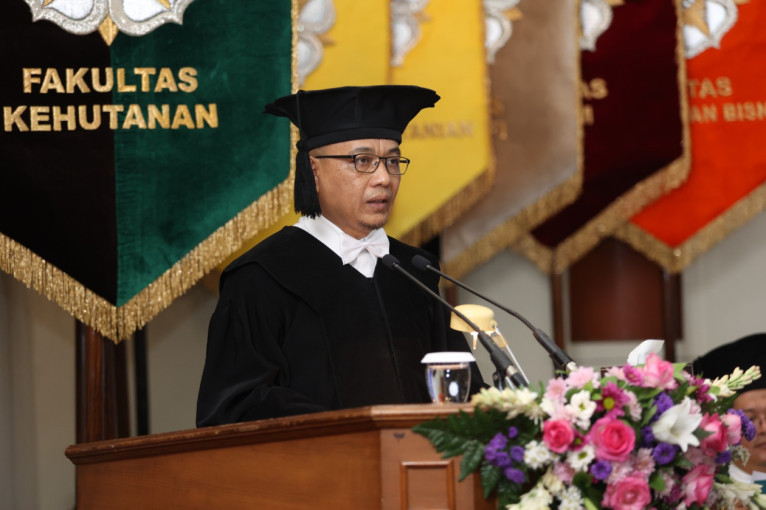
Dr. Budiadi, a distinguished lecturer at the Faculty of Forestry, Universitas Gadjah Mada (UGM), ascended to the rank of professor in the domain of tropical silviculture agroforestry.
His momentous achievement was marked by an inaugural address titled “Silviculture, Agroforestry, and Human Ecology: Pioneering Sustainable Forest Cover and Community Well-being,” delivered on Tuesday (Feb. 20) at the UGM Senate Hall.
Professor Budiadi underscored the imperative of translating the policy aimed at broadening access rights for forest-dwelling communities or indigenous groups to forested territories under the social forestry initiative into actionable directives tailored to local contexts.
He advocated implementing communal permits encompassing timber and non-timber enterprises to give farmers business security while bolstering state forest coverage.
“This endeavor is poised to fortify farmers’ livelihoods while concurrently augmenting forested expanses,” asserted the former dean.
In Professor Budiadi’s view, merely acknowledging the pivotal role of community-managed forests in realizing forest coverage targets falls short of addressing the multifaceted challenges at hand.
Hence, he advocated for policy frameworks that incentivize endeavors such as water conservation and carbon sequestration within agroforestry domains, thereby safeguarding and augmenting forested realms.
Moreover, from a technical standpoint, Professor Budiadi advocated for the establishment of intensive agroforestry demonstration plots serving as hubs for cultivating non-timber food items and medicinal herbs, thereby serving as pedagogical platforms for local communities.
“Empowering communities in post-harvest processing techniques and fostering expansive multi-product markets catering to agroforestry collectives in state forests and community-managed territories are pivotal steps forward,” he emphasized.
Government Regulation No. 23/2021 on Forestry Management has rescinded the erstwhile mandate of allocating 30 percent of forested areas in alignment with ecological and hydrological considerations.
Henceforth, the delineation of forest expanses and forest cover hinges upon the Minister of Forestry’s discernment grounded in biogeophysical factors, environmental carrying capacity, watershed characteristics, and biodiversity indices.
However, determining adequate forest coverage necessitates meticulous scientific deliberation and rational appraisal. Once delineated, stakeholders, particularly within the forestry and environmental spheres, are poised to use this metric to guide long-term forest and land management strategies.
Professor Budiadi espouses land-centric cultivation methodologies, spanning traditional silviculture to contemporary approaches like the Silin Technique and modern agroforestry practices, transitioning from timber-centric management paradigms to holistic stewardship models.
He contends that concerted efforts to bolster forest coverage dovetail with endeavors to harness forest resources to elevate community welfare.
“Sound land management practices beyond forest confines are pivotal in realizing adequate forest coverage, yet concerted government interventions are imperative to foster enhanced, more productive, and sustainable land utilization practices conducive to uplifting community welfare,” he concluded.
Author: Gusti Grehenson
Photographer: Firsto

